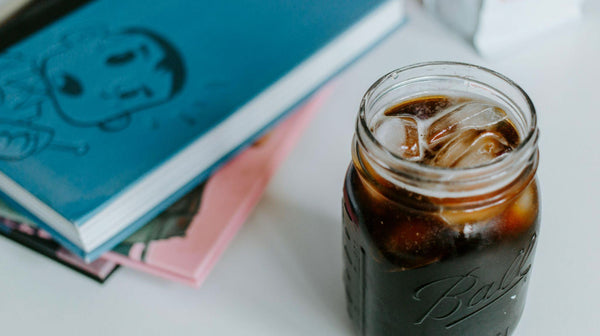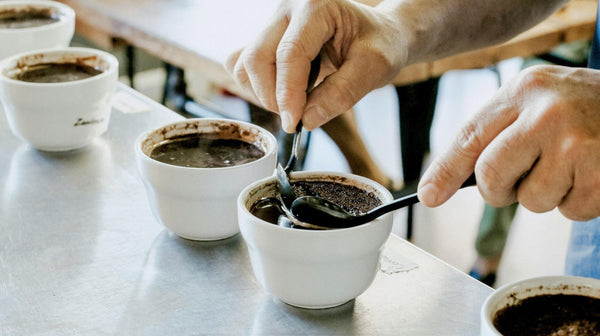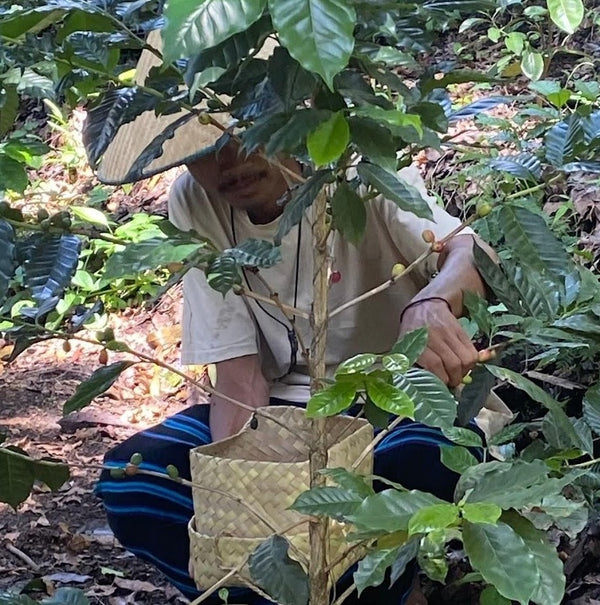Sip Into The Cup: Roasting

Photo by Daniela Paola Alchapar on Unsplash
Have you ever wondered what makes that perfect cup of coffee so special? The answer lies in a combination of factors, from the quality of the beans to the brewing method. But one of the most important factors is the roasting process.
Roasting involves heating green coffee beans to high temperatures. This might seem simple, but it's a delicate process that transforms the beans' color, flavor, and aroma. During roasting, a series of chemical reactions occur, creating the compounds that give coffee its unique taste profile. Imagine the process as a three-step journey. Drying, in which the beans are heated to remove moisture; Maillard Reaction, in which things get interesting. The beans start to brown as a chemical reaction, the same reaction that gives seared meat its delicious flavor. During this reaction, new flavor and aroma compounds are created, forming the foundation of the coffee's taste.the beans start to brown and develop their characteristic flavor and aroma, and lastly; Development, the final stage, where the beans are roasted to the desired level of darkness.
The process of roasting coffee beans might seem similar to toasting bread, and in a way it is! You could even call it coffee toasting. However, unlike bread, coffee roasting requires absolute precision. Every aspect needs to be perfect: the temperature, the timing, and the final product. Once the foundation is laid through precise temperature and timing control, a roaster's skill truly shines. Here's how they use their expertise to elevate the coffee beyond a simple toasting process.
A skilled roaster relies heavily on visual and auditory cues to guide the roasting process and achieve the desired flavor profile for the coffee beans. This involves carefully observing the color changes of the beans as they roast. As the temperature rises, the beans will slowly transition from green to yellow, then develop a light brown color. Experienced roasters can identify the exact moment, based on the shade of brown, to achieve a specific level of acidity and body in the coffee. Sound also plays a crucial role. During roasting, the beans will crackle and pop as they release moisture and expand with heat. The first crack signifies a critical point in the process, and depending on the desired roast level, the roaster might stop the process shortly after or continue until a second, louder crack occurs. By carefully listening to these pops and cracks, the roaster can gauge the internal temperature of the beans and ensure they reach the perfect level of development for the desired flavor profile.
This expertise allows them to fine-tune the roasting process for each batch of beans, ensuring consistent quality and unlocking the full potential of the coffee's unique flavor profile. The final step in this journey is determining the ideal roast level.
There's no single definitive way to categorize coffee roast levels. While some roasters rely on the basic light, medium, and dark roast labels, others delve deeper with a more formal scale. However, this formal scale isn't universally agreed upon, and the specific taste associated with each term can vary. Let's explore the different roast level names you might encounter, keeping in mind that these terms are not always used consistently.
GREEN COFFEE – UNROASTED
These are the coffee cherry seeds that have been dried and occasionally water treated after decaffeination before being delivered to the facility.
DRYING PHASE
You can refer to your coffee beans as drying when they are mid-roasted to remove excess moisture that can be trapped inside the beans. This drying process is crucial for even roasting and prevents the beans from steaming or burning. And as the moisture evaporates, the beans will release a characteristic grassy or hay-like aroma. You can’t brew it yet though.
CINNAMON ROAST
At this point in the roasting process, coffee beans technically become edible. You can have a cup of cinnamon-roasted beans with a subtle green flavor. However, they are still quite undeveloped in terms of flavor. Imagine a very subtle hint of green alongside a faint toasty note. While you could brew the coffee beans at this stage, the flavor would be weak and underwhelming. It's best to think of this stage as a preview of the potential flavors waiting to be unlocked.
LIGHT ROAST
Also known as city roast or New England roast, is a popular choice among coffee aficionados who appreciate the subtle nuances of the bean. Roasted at temperatures around 356-401°F (180-205°C), these beans begin to develop a lightly toasted nut aroma and a smooth, delicate flavor. They retain a lighter brown color compared to darker roasts and boast a higher caffeine content. Since the natural oils haven't fully emerged yet, light roasts tend to have a matte finish with a subtle sheen rather than a glossy appearance. Due to their lighter body, light roasts are often preferred for pour-over brewing methods that can highlight their delicate flavors.
LIGHT-MEDIUM ROAST
Roasted just past the first crack, these beans reach a turning point. The first crack signifies a critical moment in the roasting process where the beans release moisture and expand with heat. Stopping the roast here, or shortly after the final snaps and pops of the first crack, yields a light to medium roast.
One of the defining characteristics of light to medium roasts is the absence of surface oil on the beans. This is because the roasting hasn't progressed long enough for the bean's natural oils to migrate to the surface. As a result, these roasts tend to have a drier mouthfeel compared to darker roasts.
However, the lack of oil doesn't translate to a lack of flavor. Think of it like this, a lighter roast is like a blank canvas for the bean's natural flavors to shine. You might taste hints of citrus, or floral notes, depending on the specific bean variety and its growing region. The body, which refers to the coffee's weight and texture on the tongue, also falls on a spectrum in light to medium roasts. Lighter roasts tend to be more tea-like in body, while medium roasts begin to develop a fuller mouthfeel. This creates a range of options within the light to medium roast category.
MEDIUM ROAST
This is the "just right" option for many coffee lovers. Unlike light roasts, they're not oily and have a smoother texture. Medium roasts are known for their balanced taste. The fruity flavors and the cooked taste of the bean might be more developed with a hint of caramelized sweetness from the roasting process. This caramelization is key. It starts in light roasts and continues in medium roasts, adding a touch of sweetness and a richer body without overpowering the bean's personality.
MEDIUM-DARK ROAST
Roasted at temperatures around 437°F (225°C), these beans emerge with a slightly oily sheen and a deep, rich color, hinting at the bold flavors that await within. Unlike their lighter-roasted counterparts, medium-dark roast coffee beans have undergone a longer roasting process, right on the second crack, or very shortly after.
For those who prefer a less acidic coffee experience, medium-dark roasts are a perfect choice, making it a more palatable option for those with sensitive stomachs. But don't let the lower acidity fool you! Medium-dark roast coffee still packs a flavorful punch. The bolder roast brings out deeper, more complex notes, often reminiscent of chocolate, nuts, and even a hint of smokiness. These rich flavors are particularly well-suited for brewing methods like drip coffee, French press, or cold brew.
DARK ROAST
Dark roast coffee is the darkest roast on the spectrum, sporting a deep brown, almost black color and a shiny oil coating. Roasted at temperatures above 437°F (225°C) for a longer time, these beans lose some of their original bean flavor. But, they gain something even better!
Think rich chocolate, toasted bread, those hints of smokiness. Dark roast coffee is all about bold, intense flavors. This makes them perfect for specialty drinks like macchiatos, mochas, and lattes. The sweetness of the milk and sugar perfectly complements the dark roast's strong flavors, creating a delicious combination.
Now, we already know a bit about different roast levels. The question is how will you know which one would suit you best? Quick tip. You’ll want to consider a few things before selecting the right roast. The flavor notes and drinking preference. Pay attention to the flavor notes used to describe the coffee. If those flavors appeal to you, you'll likely enjoy the coffee regardless of the roast level. If you prefer to add milk, cream, and/or sugar to your coffee, then medium and dark roast holds up better.
Remember, a basic understanding of roast levels is helpful, but your taste is the ultimate guide. Don't be afraid to experiment and explore different options to find your perfect cup!




